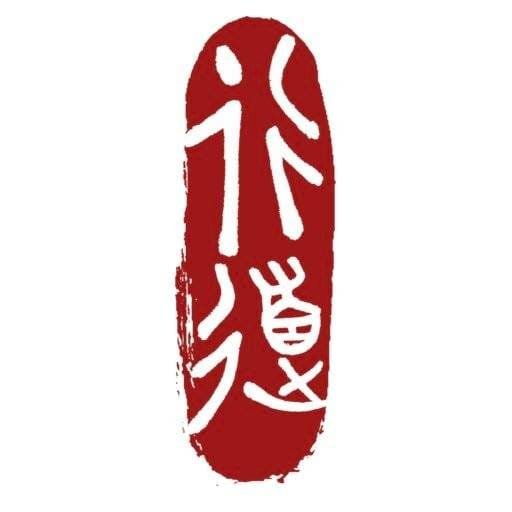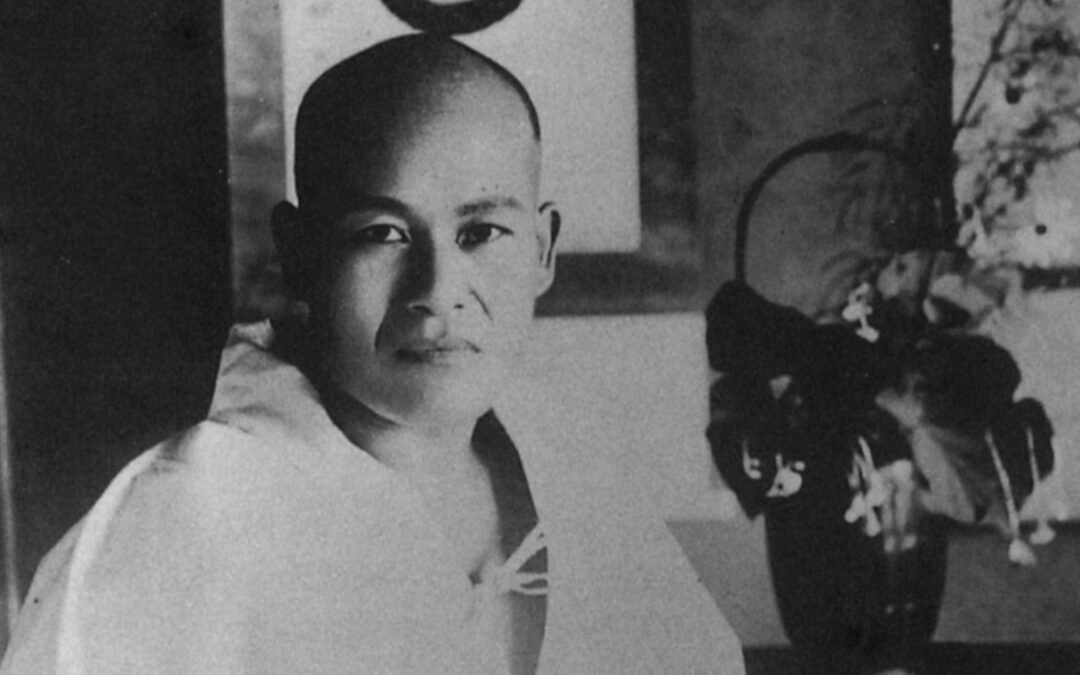The cultural and historical context of Aikido and Gyodokan’s lineage.
Originally posted 31.03.2024
Created in Japan by Morihei Ueshiba, one of the highest exponents of martial arts, Aikido is a deeply Japanese art. It sounds obvious, but to appreciate what that statement means, one has to look past the surface.
Japan has a uniquely rich, complex history and often to western eyes, contradictory beliefs and philosophies. An island nation, living under the mercy of nature’s might, covered by mountains across almost 80% of its territory, it has a profound warrior culture going back to pre history. Its indigenous animistic religion, Shinto (which is far from being a homogenous and systematized religion), was combined with Buddhism (which had already been mixed with many Chinese beliefs such as Daoism, Yin and Yang theory and Confucianism) upon its introduction in the 5th and 6th centuries. Japan was at the eastern end of the Silk Road and its many cultures.
When the military rule takes place in the 13th century with the first Kamakura Shogunate, the foundations to the Samurai warrior culture are laid and Japan will spend the next 400 years in constant internal war. It is around the 14th and 15th century, during periods of peace, that the first teachers and schools of combat are formed and martial arts start to be systematized. It’s during these short peaceful periods that the professional warrior class, the Samurai, start to look at their killing arts as means to develop themselves physically, mentally and spiritually – it’s worth noting that such divisions of the human being, didn’t exist for them, as the pre modern man saw as a whole what modern man sees as separate.
Dedicated training halls, or Dojos, didn’t exist, and practice was largely conducted outdoors, in forests and very often in shrine and temple grounds, under the protective eyes of shinto and Buddhist deities. Amongst the various schools of Buddhism, the warrior class had a very close relationship with esoteric buddhism and Zen.
Once the major wars ended with the Tokugawa rule in the early 17th century, the warrior class either became civil servants to the shogunate or, the most gifted in the arts of combat, established their schools across Japan. That is when the first indoor spaces dedicated to martial training are built, especially because now secrecy in busy cities like Edo (present day Tokyo), Osaka, Kyoto are not only a matter of hiding your secrets of combat proficiency, but also to guarantee their particular school financial gains.
During that time the samurai, without having wars to fight, would travel across Japan to test their proficiency in duels against other martial systems (a practice that only ended in the 1960s). But it is also that time that the warrior class, many now only bureaucrats, got involved even more with the high arts (calligraphy, painting, poetry, tea) and started looking even deeper at their systems as ways to better themselves.
Morihei Ueshiba and his Aikido, came at the tail end of the last 1000 years of warrior culture. Born in 1883, after the end of the Samurai rule and at the early stages of Japan’s modernization, he grows up in rural Tanabe, still very much embedded in the deeply spiritual mountains, shrines and temples of Kumano.
In his youth, he studies different martial arts (swordsmanship, spear, sumo…), he fights in the russo japanese war, settles in Hokkaido (the equivalent of the wild west at the time) and later meets his two most influential teachers: Onisaburo Deguchi and Sokaku Takeda.
Deguchi was a spiritual leader of a new religion called Omoto kyo, which was based on spirit possession practices. Takeda on the other hand, would teach to Morihei his martial art, Daito Ryu Aikijujutsu. Ueshiba would become his main student for years to come.
But it was Deguchi, who had the highest connections with politicians and high ranking military, who recommended his high society connections to study Ueshiba’s Aiki Budo. The doors opened to Ueshiba led him to teach members of the imperial family as well as special operations groups of the Japanese Imperial army. It was also Deguchi who would introduce Ueshiba to his far right friends, many of whom would later be recognized as war criminals.
Settling in Tokyo, he opens his dojo, the Kobukan, which would become known as “the hell dojo”. Due to the war and the heavy bombardment of Tokyo, he moves to Iwama in 1942, settling in a small farming community and teaching there. He would travel all over Japan to teach his Aikido after the war, but he lived in Iwama for the rest of his life.
Ueshiba, also known as O Sensei (great teacher) had many students during his 86 years of life, and our lineage descends from one of his most famous students: Kazuo Chiba.
Chiba sensei was born in 1940 and was deeply interested in martial arts, having achieved 2nd Dan in Judo by age 18 and 1st kyu in Karate. In 1958 he sees a picture of O Sensei in a magazine and has the intuition he found his true teacher. He then camps in front of the old Kobukan dojo for 3 days, before O Sensei accepts his request of becoming his disciple.
He spends the next 6 years as an uchi deshi (in house apprentice), living in the dojo, training full time and traveling across Japan with O Sensei, assisting him in his lessons and demonstrations. Only the deshis who traveled with O Sensei were required to learn weapons, as he often demonstrated using the sword and staff. Chiba sensei had a special appreciation for weapons training, and O Sensei would encourage it by introducing him to his friends of other arts. It was in this way that Chiba sensei would learn Iaido from the likes of Junichi Haga and Mitsuzuka Takeshi, both direct students of Nakayama Hakudo, the great Iaido, Kendo and Jodo master.
The Aikikai, the organization headed by O Sensei’s son Kisshomaru Ueshiba, starts sending their instructors abroad to introduce Aikido across the globe. It’s in this way that in 1964, Chiba sensei is sent to England. After 10 years in the UK, Chiba sensei returns to Japan and in 1981, invited by his fellow uchi deshi Yoshimitsu Yamada, he joins the ranks of Japanese teachers in the US.
San Diego becomes his base and his first dojo, which would become known as “the pressure cooker”, would attract many devoted practitioners. In 1985, a Londoner of Turkish Cypriot descent named Ismail Hasan lands in San Diego to study directly with Chiba sensei.
Chiba sensei was known, feared and respected for his extremely intensive practice and teaching, but also recognized as a formidable teacher, capable of forming and molding very proficient Aikidoka. The training life of his students was divided between Aikido, weapons, Iaido and Zen meditation.
After nearly 10 intense years as a student of Chiba sensei, 3 of which were training as uchi deshi, Hasan sensei returns to London and shortly after Aikido of London is founded in 1994.
Our dojo, Aikido Gyodokan, starts its activities in London, Ealing, in 2023 under the instruction of Ivan Melo and Cathy Okada, students of Hasan sensei since 2014 and 2018 respectively.
Bibliography
Foundations of Japanese Buddhism Vol1 and Vol2 – Daigan and Alicia Matsunaga
Taming of the Samurai – Eiko Ikegami
Chinkon Kinshin (Mediated Spirit Possession in Japanese New Religions) – Birgit Staemmler
The Catalpa Bow (a Study of Shamanistic Practices in Japan) – Carmen Blacker
Legacies of the Sword – Karl F Friday
Japan’s Ignored Culture Revolution – Allan G. Grapard
Protocol of the Gods – Allan G. Grapard
Budo Contemplations – David M. Valadez
Life Giving Sword: Kazuo Chiba’s Life in Aikido – Liese Klein
Buddhism and Martial Arts in Pre Modern Japan – Steven Trenson
Tengu (Shamanic and Esoteric Origins of the Japanese Martial Arts) – Roald Knutsen
Divine Record of Immovable Wisdom and Taia Ki – Takuan Soho
Complete Musashi (Miyamoto Musashi’ complete writings) – Alexander Bennett
Daito ryu Aikijujutsu (Conversations with Daito ryu Masters) – Stanley Pranin
Zen Mind, Beginner’s Mind – Shunryu Suzuki
Zen and the Samurai – DT Suzuki
Online:
Budo: The Way of the Warrior Podcast – David M Valadez (Spotify, Apple Podcasts, Soundcloud).
https://www.aikidosangenkai.org/blog/ – articles, translations and interviews
https://www.guillaumeerard.com/ – articles and interviews

